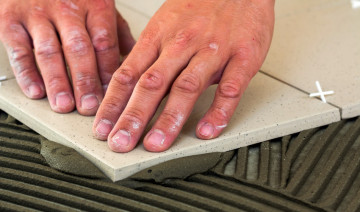
Learn About the Differences Between Mortar and Grout
When it comes to construction and masonry work, understanding the differences between mortar and grout is essential. While they are similar in composition, they have distinct purposes and applications. Below, we'll explore the differences between mortar and grout, as well as the various projects and applications where each is commonly used.
Mortar
Mortar is a mixture of cement, sand, and water, with the addition of lime in some cases. It is a thick paste that is used to bind bricks, stones, or other materials together in masonry construction. Here are some key points about mortar:
- Strength and Durability: Mortar is designed to provide strength and durability to masonry structures. It acts as a bonding agent, holding bricks or stones in place.
- Projects and Applications: Mortar is primarily used for projects such as bricklaying, stone masonry, and blockwork. It is commonly applied in projects like building walls, chimneys, retaining walls, and foundations.
- Consistency: Mortar has a thicker consistency compared to grout. It is typically spread with a trowel or a pointing tool.
- Variations: There are different types of mortar available, such as Portland cement mortar, lime mortar, and masonry cement mortar. Each type has specific properties that make it suitable for different applications.
Grout
Grout, on the other hand, is a mixture of cement, sand, and water (sometimes with the addition of colorants or additives) that forms a fluid-like consistency. It is used to fill gaps between tiles or stones after they are laid. Here are some key points about grout:
- Gap Filling: Grout is primarily used to fill the gaps or joints between tiles, stones, or other materials in masonry or tile installations. It helps secure and stabilize the tiles while providing an aesthetically pleasing finish.
- Projects and Applications: Grout is commonly used in projects such as tile flooring, backsplashes, shower installations, and mosaic work. It is applied after the tiles are set in place.
- Consistency: Grout has a fluid-like consistency that allows it to flow into gaps and spaces. It is typically applied using a grout float or a grout bag.
- Variations: There are different types of grout available, including sanded grout, unsanded grout, epoxy grout, and polymer-modified grout. Each type has its own set of properties, such as water resistance, flexibility, or stain resistance, to suit different applications.
Mortar is used as a bonding agent in masonry construction to hold bricks, stones, or blocks together, while grout is used to fill gaps between tiles or stones. Mortar is thicker and provides strength and durability, while grout has a fluid consistency for gap filling and aesthetic purposes. Understanding the differences between mortar and grout is important for choosing the right material for your specific project and ensuring its success.
